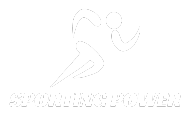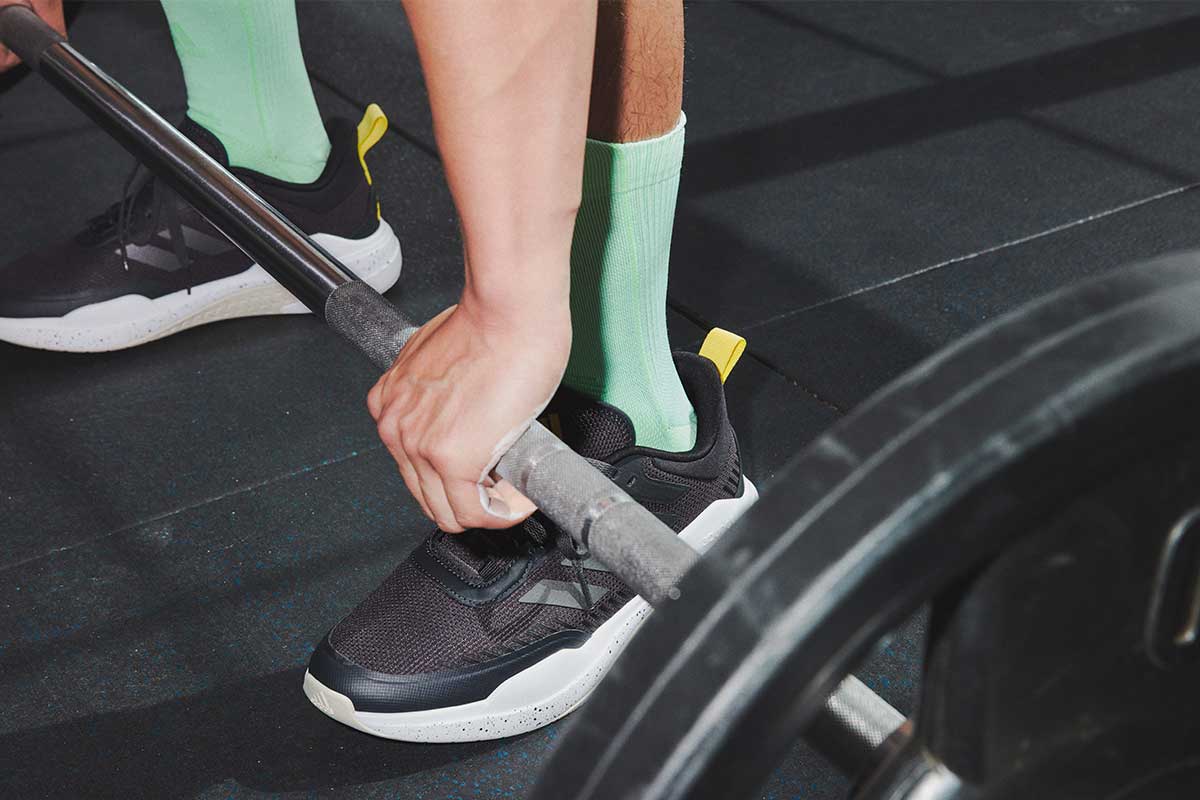It’s not easy to strike a balance between power and working coaching. This can lead to confusion amongst runner. How can you increase your endurance while building muscle at the same time?
Abstractly, this is:
You can change your run length, period and frequency
Include or substitute power coaching workouts in your fitness schedule
Consuming nicely
Sleeping nicely
The above simplified instructions hide a great deal of nuance. Read on to find out more about specifics, workout splits, diet plans and general advice.
Does Leg Muscle naturally develop when you operate? Sure, so does Core!
Operating is an excellent muscle-building activity for your legs, core and again. Quadriceps, gastrocnemius, soleus, quadratus, and spinal erectors are the largest muscle groups in these areas. If you run up hills, your hamstrings will be less active. The ankles, the knees, the pelvic floor, the upper back, biceps and shoulders are all smaller muscle groups.
Operating is resistance training with body weight. Every time we step forward, we move the bottom. When we lift our knees, we are pulling towards gravity’s downward pressure.
Operating Type Suggestions
By working on a nice working style, you can become stronger while working. Here’s some information.
How to Mix Resistance and Operating Coaching
Combine working out with strength training to maintain muscle mass, gain new energy throughout the body, and ensure correct recovery.
Operating Recommendation
Reduce your weekly mileage based on your personal objective, especially in the early stages of your strength training. Sprints and quick, fast runs can help build muscle mass in your legs.
It is important to vary the depth, duration, and amount of your workouts. This will ensure that every muscle gets a good workout. Here are some examples that will help you hypertrophy and engage different muscle groups:
An informal jog
Climbing stairs*
Climbing or Path Working
Long, endurance-based runs
Operating a Special Distance Daily
Uphill and downhill operating
Dash Exercises
Want to improve your cognition or boost your mood? Attempt climbing stairs! This study shows that a short stair climb increased the speed of understanding and optimism in men.
Hypertrophy:
The growth and progression of muscle cells.
Operate: high power, speed, power storage and endurance
Benefits: bone density, longevity, metabolic efficiency
Perks: a extra toned, lean physique
Power Coaching Recommendation
A little goes a long way when it comes to resistance training. Resistance band exercises can be enough to stimulate muscle growth without the need for heavy weights.
If you can access dumbbells or other weight-training equipment, such as a barbell or kettlebells and weight-training machines then it’s important to pay attention to the frequency and quantity of training. Numerous studies show that power training done at high frequency (3+ days a week) results in the same lean muscle gains as power training done at low frequency (1x a week). Research has also shown that a greater number of repetitions or units can increase overall muscle growth. Three or more units of 8-12 reps are the best. (6, 7, 8)
Higher, Not Extra
You don’t need to exercise more if you already train 4 hours or more per week to see results. You may see a decrease in your working or power performance if you train again before you have had enough time to recover. The prognosis is either short-term overload or long-term undertraining (skip the last part for more information on overtraining). (9, 10)
Here are some smarter methods to train:
Replace one or two power training sessions with one or more runs
Spend half an hour on power coaching and reduce the length of a run by half.
Power coaching is a great way to do a short, intense run.
You can run in the morning and hit the gym at night (or vice-versa).
Before or after?
This blog post is full of advice about when to run and work out before or after a strength coaching session.
Coach Quantity
The importance of exercise programming! Both weightlifting and working out affect muscle mass in different ways. You can train every day if you combine power training with working. With time, your health and metabolism will improve. You can then begin to do back-to-back periods or twice daily with two+ rest days each week. (13)
Diet: Your Secret Weapon
Exercise without correct nutrition is like a car trying to run with an empty fuel tank. If you’re a runner who wants to tone and construct muscle, this is something to consider. Ensure your diet provides your body with at least the amount of energy you use when exercising.
It is important to be aware of the macronutrients and micronutrients you consume in order to restore your body’s glycogen stores and promote muscle protein synthesis.
Muscle Protein Synthesis
How amino acids are converted into muscle protein. The main way your body builds muscle.
Avoid fads that suggest you should drastically alter your eating habits to match your workout (like “carbo loading” before a run, or “protein bulking”, after a weightlifting session). It is best to eat well every day so that your body has everything it needs. Your metabolism will also acknowledge that it does not have to store fat in the event of hunger. It should be able to use the food you provide it with!
What is Protein and Why?
Skeletal muscles are 80% protein. (14) If your goal is to increase muscle mass, you must consume enough protein. Amino acids construct protein. Learn about the different types of protein to make informed decisions regarding your diet and supplements.
Amino acid are building blocks for molecules like proteins and transporters throughout the body. Twenty amino acids are used to form chains that make up proteins. There are nine amino acids that cannot be found in the body. They should be included in our diet. Animal products are the best way to obtain all essential amino acids. When given specific vegetarian food enhancers, however, the body can produce all essential amino acids. (15, 16)
Here are some vegan food enhancers that help the body to produce important amino acids:
Lentils and flaxseeds
Quinoa and almonds
Black beans and rice
Wild rice with cashews
Kale salads with Chia Seeds
Pinto beans and corn
Spinach salad with sesame seeds
Zucchini and buckwheat
Complete grain bread with Nut Butter
Oats & pumpkin seeds
Our blog is full of recipes that are packed with protein! You can find a list of all our recipe posts HERE.
Omega 3 Fatty Acids
Omega 3s, like amino acids are building blocks for the body. They act as gatekeepers to regulate the movement of hormones and vitamins through cell walls. They also help veins pump blood, and reduce irritation. (17)
You may experience a “mind fog”, a problem with staying focused, or a slowed understanding rate if you don’t take the time to eat well and recover after exercising. This is because the human brain is 60 percent fat. When we are not consuming food or resting, the body can use fats in our brain to give us energy. Omega-3 fatty acid fuels our brain. Taking Omega-3s in their pure form or as supplements can improve alertness and help you recover faster.
Omega-3s are believed to be essential for the construction of skeletal muscles. According to scientific research, Omega-3s help older adults improve their muscle strength and measurement. Omega-3s help people retain muscle even when they are not strength-training. After you get over your initial training hump, you can train less and still gain features. This is great information!
Omega-3s: The Right Way to Get Omega-3s
Consume pure wild-caught salmon, chia seed, walnuts and soybeans. Or, supplement with EPA and DHA.
Put up-Exercise Carbohydrates
After a workout, consuming carbohydrates with a high glycemic index is advisable to help restore muscle mass. It’s important to consume these carbohydrates if you plan on doing two exercises within 24 hours. High-glycemic carbs include meals like potatoes, squash, oats with complete grains, bulgur and brown rice. To get more bang from your carbs, combine them with antioxidant carbohydrates like berries and kiwis.
Dietary Supplements
Medical Disclaimer
This blog post is only for informational purposes and does not substitute professional medical advice. To seek medical advice, it is always best to consult a healthcare provider or medical professional.
The best weight-loss program includes both macro- and micronutrients. Supplementing essential nutritional vitamins and minerals can be helpful in situations of intense exercise or when eating is difficult (e.g., during round exercises).
Here’s a list of dietary supplements which assist in muscle building and restoration:
Creatine
Department-chain amino acid (especially for vegetarians and Vegans)
Collagen
Whey protein
Caffeine is good for boosting the heart rate and going big.
Turmeric Extract (for anti-inflammatory benefits pre-run).
Fish oil
Sleep Makes You Stronger
You may run, you may hit the gym, but do not sleep? You could as well skip it all, because sleep is the key to muscle development. Sleep deprivation reduces muscle protein synthesis among young, healthy women and men. Even a few sleepless nights may compromise glucose metabolism, and affect muscle function. If you’re looking to build skeletal muscle mass, you’ll also need to get at least eight hours of sleep each night. (23)
The repair of torn muscles fibers is more difficult than repairing glycogen stores (which occurs during power training). While you are restoring glycogen, you can exercise again within a single day. According to research, the more weight lifted the longer it takes for glycogen to be restored. (24)
Not Seeing Outcomes?
You have put in the miles, added up the kilos, consumed the macros and got the ZZZs. You’re still not seeing results, or you have plateaued with your initial features. Overtraining or overreaching may be the cause.
Over-reaching syndrome (OTS) vs. overtraining syndrome (OR)
OR can be characterized by a sudden decrease in performance, regardless of the coaching load. It could also result in OTS (obsessive tiredness syndrome), a state of chronic fatigue and exhaustion. (25)
You’ll notice a decline in your workouts if you overreach and overtrain. This blog post covers a number of psychological and physical pains. The best solution: deload.
Deloading your Coaching
In the case of OR and OTS, it’s necessary to take a rest. The amount of rest time needed varies according to research. You’ll be able to tell when you have rested enough if you feel energetic and motivated about exercising once again.
Here are some examples of deloading strategies:
Plan to deload at regular intervals.
Every three weeks
Each six weeks
You can have it whenever you feel like it
For example, you can reduce the intensity of your current exercises for 2-3 weeks.
Reduce your weightlifting load by half
Low runs can be replaced with mild jogs
Try other types of training, such as yoga, bodyweight exercises or cycling, instead of weightlifting and working out.
Detrain completely for 3 weeks
A study shows that there is no loss of muscle mass following a three-week break in a 15 week routine
Build Your Own Construct!
You’re now armed with the training, examples and mitigation of worst-case scenarios. Now, it is time to do your job: download the adidas Coaching and adidas Working apps for exercise ideas and coaching inspiration.







